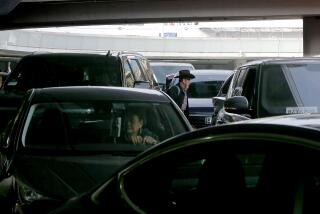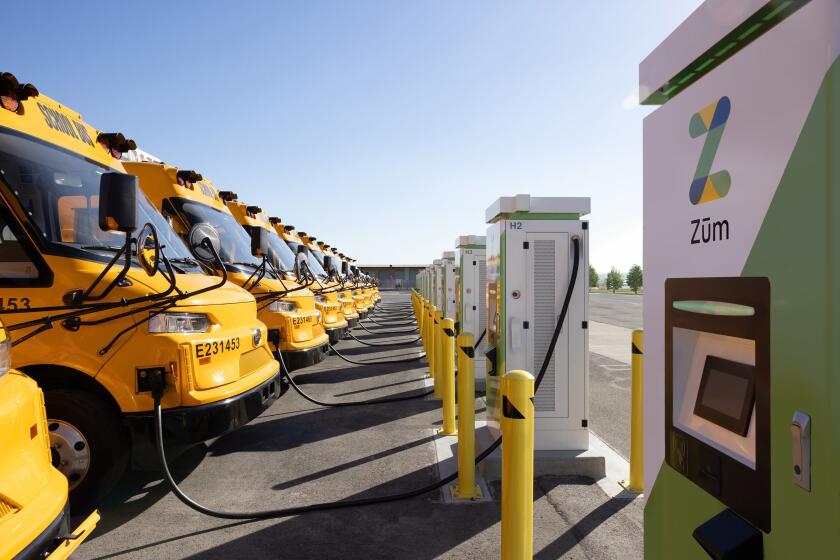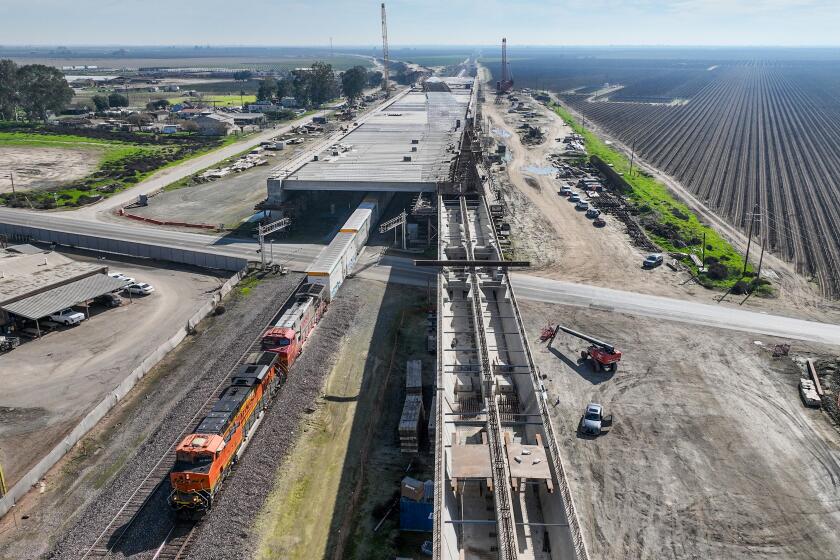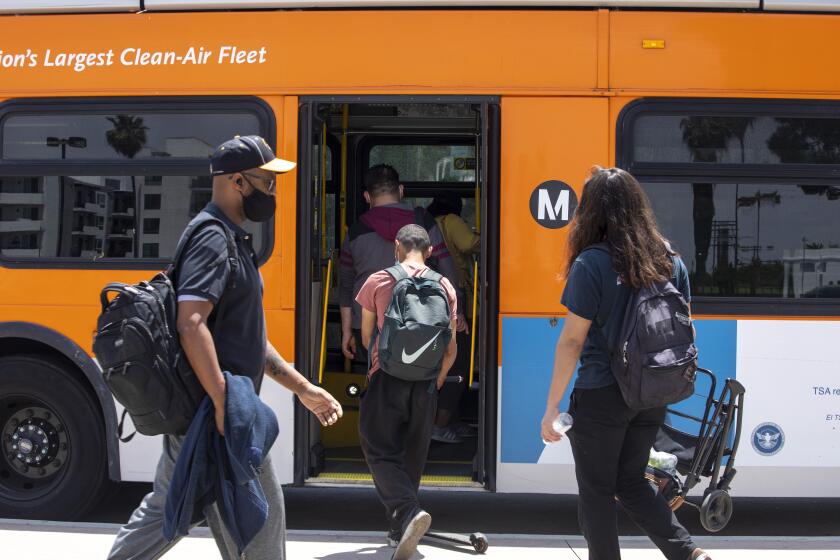Lease LAX, Turn Palmdale Into a High-Tech Air Hub : Privatization: The old airport’s best use is as a revenue source, partly for current needs, mostly for the future.
For years there has been sporadic mention in the public policy arena about the potential lease of Los Angeles International Airport and the windfall in revenue such a lease could produce for the financially strapped city of Los Angeles. Now a striking confluence of economic and political factors has made the privatization issue ripe for action.
An advisory report to the Board of Airport Commissioners last week suggested that leasing LAX could net the city as much as $3.2 billion if certain legal and political obstacles can be overcome. Last month, the federal government signaled that it will not only withdraw its opposition to such a proposal, but will actively support a bold plan for privatization of LAX. This should not, however, be a substitute for federal urban assistance for Los Angeles, as some in Washington have suggested.
With each passing year, the city of Los Angeles, which owns and operates four airports (Ontario, Palmdale and Van Nuys, in addition to LAX), finds itself in even more dire financial straits. The riots will exacerbate the city’s fiscal woes, placing an unprecedented strain on government spending at a time of deep economic recession and social unrest. At the same time, in sharp contrast, LAX is in excellent financial shape, generating considerable excess revenue.
With each passing year, the ground and air traffic congestion around LAX worsens, endangering the flying public and aggravating both local residents and airport users.
With each passing year, as Pacific Rim-oriented trade grows, the importance ofLAX to the vitality of our region increases. LAX today adds, directly and indirectly, 402,000 jobs and $37 billion of activity to our economy.
With each passing year, the deteriorating condition of our transportation system becomes more obvious. The public’s determination to improve our quality of life through new investment in transportation infrastructure has been made abundantly clear.
And, coincidentally, the airport’s long-term operating agreements with the airlines, which have resulted in landing fees at LAX that are substantially lower than landing fees at comparable airports, expire at the end of 1992.
Still, despite these unmistakable trends and facts, the public policy gridlock resembles a Friday afternoon traffic jam on the 405 freeway.
The lease of Los Angeles International Airport would stimulate the economy, replenish the city treasury, increase the efficiency of operations at the airport and create new funding sources for such transportation improvements as the rapid development of the Palmdale Regional Airport and a high-speed rail link between LAX and the Palmdale facility. Its benefit cannot be measured simply in the millions of dollars, but rather in the billions of dollars of new jobs and businesses that would flourish as a result of this investment in our future as a hub for international trade.
If the lease price for LAX were about $3 billion, for example, prudent investment could yield more than $200 million in annual revenue for the city. A portion of this money could be set aside for economic revitalization, additional police and other essential services throughout Los Angeles. It is vital, however, that the bulk of these funds be leveraged further to invest in the infrastructure necessary to make Los Angeles competitive in the global 21st-Century economy, which is less than a decade away.
Ten years from now, if we cannot ride a Maglev (or other 21st-Century technology) train from LAX to Palmdale, where transpacific flights will carry passengers and cargo to the commercial hubs of Asia, then Southern California’s economic prosperity will be in jeopardy.
We are all natural allies in this effort. Those on the Westside who complain about congestion ought to view Palmdale as the only viable alternative to the further expansion of LAX itself.
People in Ventura County and in the San Fernando, Antelope and San Gabriel valleys ought to see Palmdale as the only viable alternative to their embattled excursions to and from LAX. Airline and air freight companies ought to prefer the easy utilization of Palmdale to the overcrowding found on the streets and runways of LAX.
Because of the foresight of the city’s Board of Airport Commissioners in the late 1960s, which purchased 18,000 acres in Palmdale, we have the extraordinary opportunity to create a multimodal transportation center to fuel future economic growth without adverse environmental affects.
And the only way we will be able to pay for modernizing our aviation facilities and the intermodal links to our airports is by pursuing aggressively and intelligently the asset management of LAX.
The lease of LAX can be the catalyst for the prosperity of generations to come. To those short-sighted airlines anxious to preserve their existing arrangements and to those other critics who cite legal obstacles and regulatory hurdles, we recall the adage: “Those who are not part of the solution are part of the problem.”
More to Read
Start your day right
Sign up for Essential California for news, features and recommendations from the L.A. Times and beyond in your inbox six days a week.
You may occasionally receive promotional content from the Los Angeles Times.






